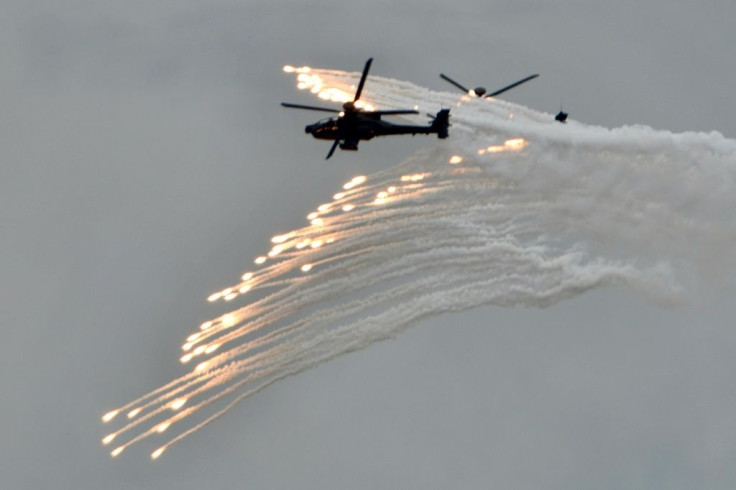PLA Mock Attack On US Navy As Chinese Jet Intercepts Aircraft In South China Sea
KEY POINTS
- Recent PLA exercise appeared to be particularly focused on the U.S. naval forces in the region
- Chinese navy has been using their routine encounters with the U.S. warships to enhance their combat capabilities
- Intensity of U.S. carrier operations in the South China Sea have also increased in recent years
Amid escalating tensions in the South China Sea, the Chinese Navy reportedly conducted a simulated attack on a U.S. Navy task group on Dec. 21, apparently on the same day when a Chinese fighter jet intercepted a U.S. surveillance aircraft, which the Pentagon described as an 'unsafe maneuver.'
This stimulated attack was carried out as part of a large-scale Chinese exercise in the South China Sea, involving the PLA navy's aircraft carrier, the Shandong, as well as other bomber and fighter aircraft, said a report by The War Zone.
"As part of that exercise, a strike group led by the Shandong simulated attacks on a U.S. Navy formation," an official from an unnamed Asian country reportedly disclosed to the Financial Times.
While intense Chinese military activity and show of force in the South China Sea are not unusual, the War Zone report points out that the recent PLA exercise appeared to be particularly focused on the U.S. naval forces in the region.
On Dec. 21, the U.S. military reportedly sent three P-8A maritime patrol aircraft, one RC-135V surveillance aircraft and one E-3G airborne early warning and control aircraft from Clark Air Base and Kadena Air Base to operate over the South China Sea and south of the Taiwan Strait, the War Zone, which cited the Beijing-based SCS Probing Initiative, added.
Apparently, the RC-135V could very well have been the one that was intercepted by the J-11, the report said.
PLA Southern Theater Command just released a video of the encounter on Dec 21, accusing that, "The RC-135V ignored repeated warnings from the Chinese, and suddenly changed its flight attitude and squeezed the CN surveillance aircraft to the left and made dangerous approaches." https://t.co/FtRTHaWmSJ pic.twitter.com/jmuvpFJhyc
— SCS Probing Initiative (@SCS_PI) December 31, 2022
Notably, while the latest aircraft carrier Shandong was conducting its exercises on Dec. 21, another aircraft carrier task group led by the aircraft carrier Liaoning was operating in the Philippine Sea, conducting another large-scale exercise along with Russian warships. The Liaoning is also reported to have for the first time sailed close to the U.S. military base on Guam.
As reported on Dec. 12, the Chinese navy has been using their routine encounters with the U.S. Navy, allied warships and military aircraft in the South China Sea region to test and enhance their own combat capabilities under real conditions.
"When we spot adversaries at sea entering some sea regions, we would proactively move ahead and meet with them, using them as practice partners," PLA Navy's Captain Wang Hailiang told China Central Television (CCTV), according to the Global Times.
The close-in operations in the South China Sea, the Taiwan Strait and the East China Sea offer a good chance for the Chinese military to gather real intelligence on them and boost combat capabilities, a Chinese military expert was quoted as saying by the Global Times.
Meanwhile, the intensity of U.S. carrier operations in the South China Sea has also increased in recent years with two Nimitz class carriers, the USS Nimitz and USS Ronald Reagan conducting their first dual-carrier exercise in July 2020 -- the first of its kind in six years.

© Copyright IBTimes 2025. All rights reserved.




















